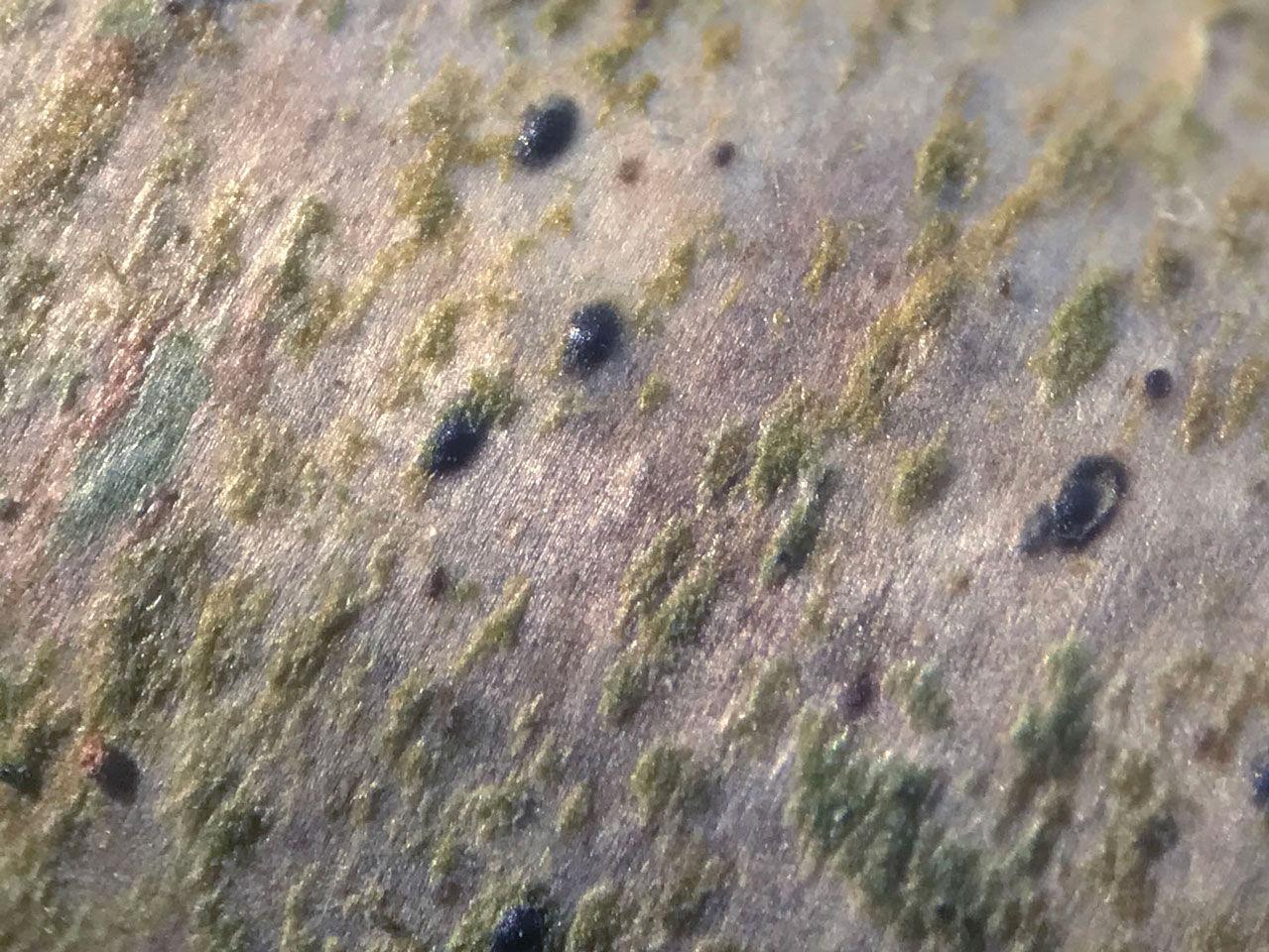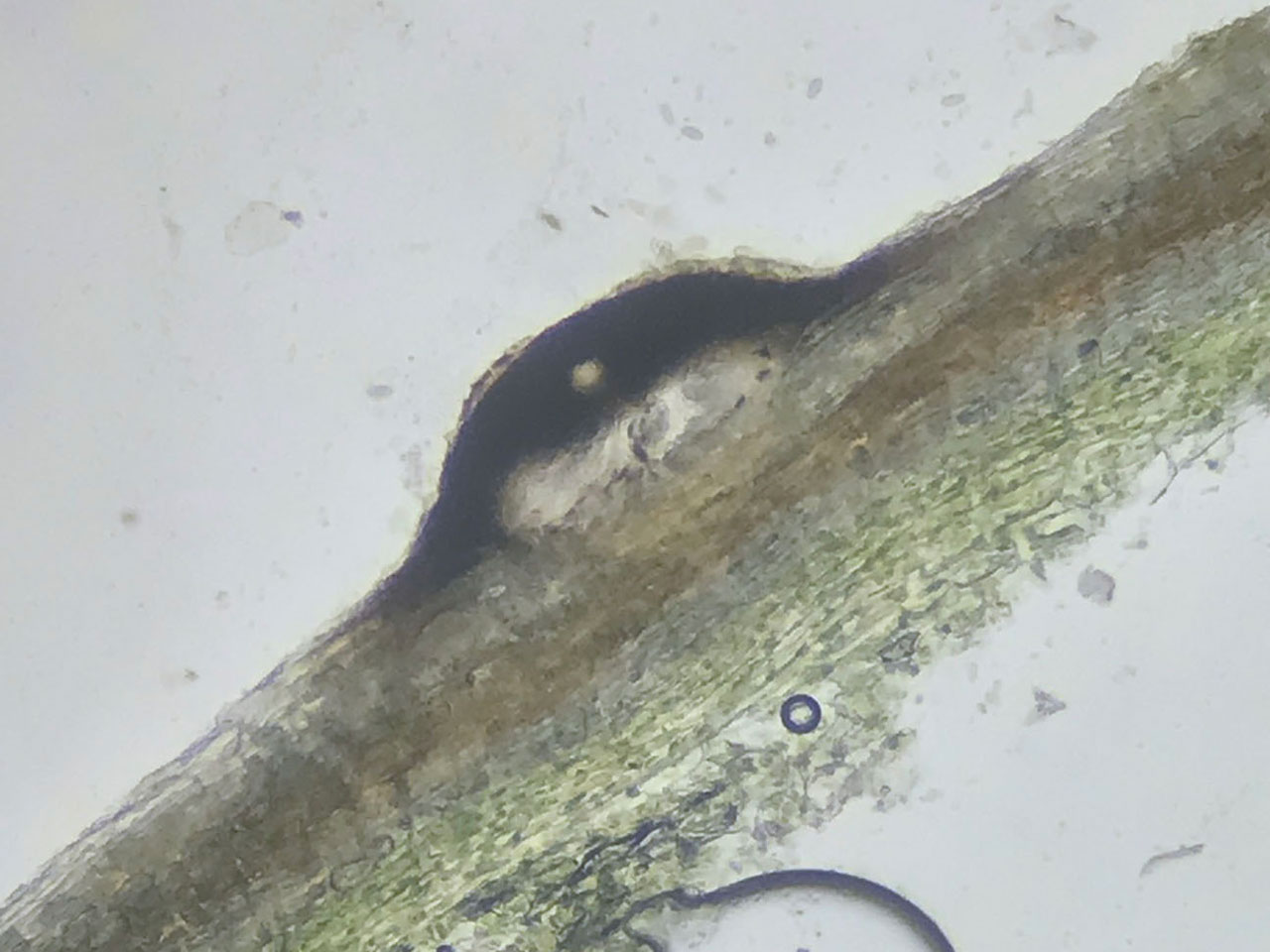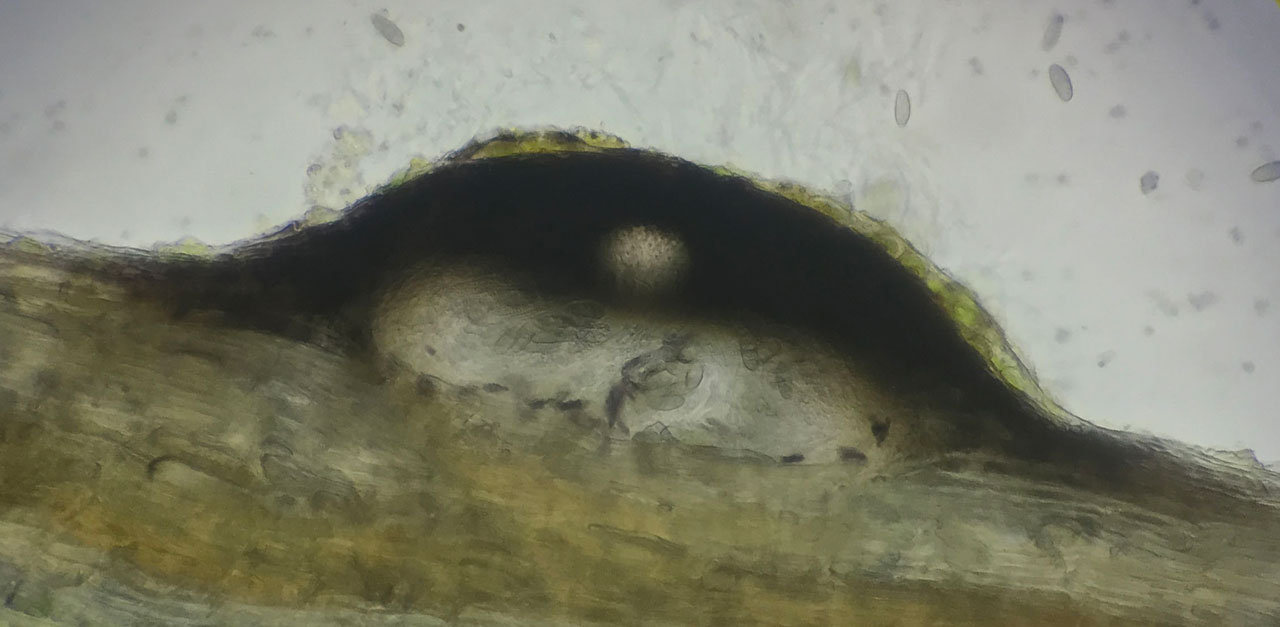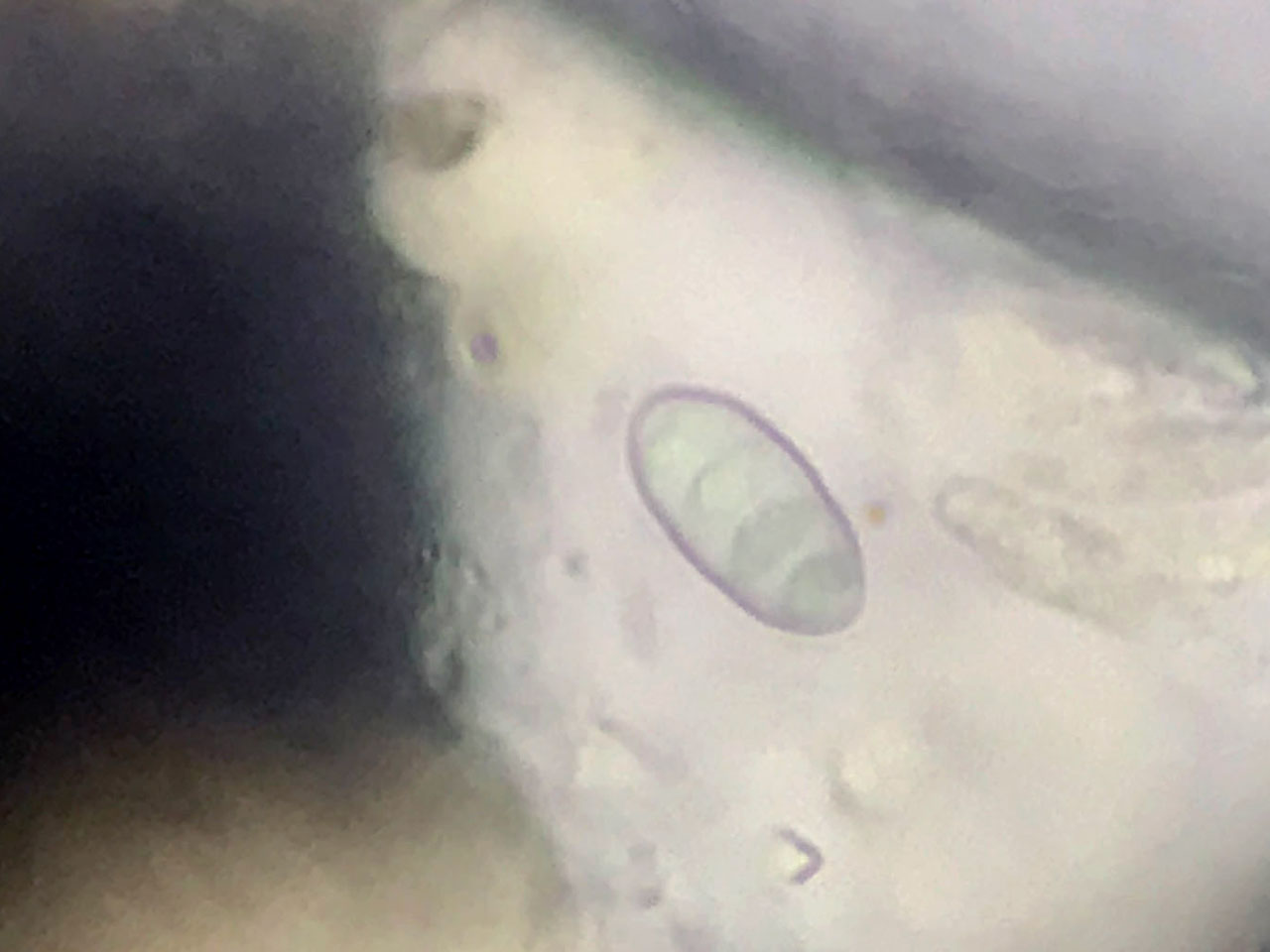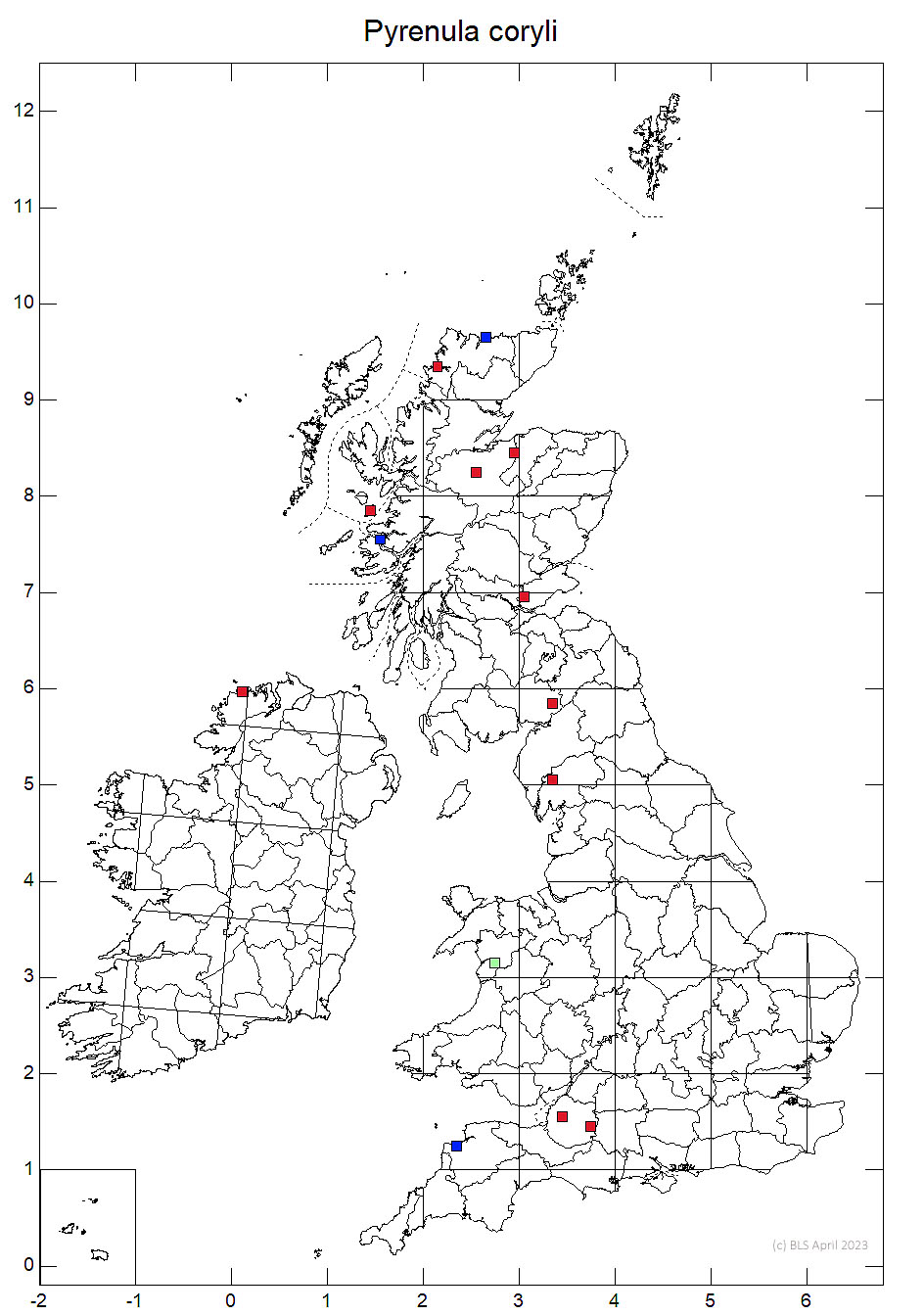This Pyenula has only a weekly lichenised thallus and is unlikely to be mistaken for any of the other British species. It is more likely to be mistaken for the field for species of Arthopyrenia and Eopyrenula. The spores of some Eopyrenula species look similar (Eopyrenula grandicula & Eopyrenula avellanae) and also have three septate ascospores, but these are brown and lack lenticular lumina.
Thallus pale grey; pseudocyphellae more or less absent; probably lichenised. Perithecia 0.2–0.3 mm diam. and ca 0.1 mm high, with a laterally extending involucrellum; pigmented exciple not continuous below the perithecial cavity; anthraquinones absent. Ascospores 10–17 × 4–6 μm, 3-septate. Pycnidia scattered amongst the perithecia; conidia ca 20 × 0.5 μm, thread-like.
Difficult to separate in the field from species of Arthopyrenia and Eopyrenula.
On Hazel bark.

Very Rare, S.W. England (Devon, Somerset), North Wales (Merioneth), Cumbria, scattered in Scotland, N.W. Ireland. Indications are that the species has greatly declined in distribution since the pre- industrial era (Ellis et al. 2018), doubtless in tandem with many other lichen species.
A very rare species of old Hazel bushes that was historically much more widespread but has become very rare. Its recent rediscovery in lowland England in two locations in Somerset, however, possibly marks the beginnings of a recovery
Britain: Vulnerable
Scotland: Priority Taxon for Biodiversity in Scotland
Cannon, P., Coppins, B., Aptroot, A., Sanderson, A. & Simkin, J. (2023). Perithecial genera I, including Acrocordia, Alloarthopyrenia, Anisomeridium, Antennulariella, Arthopyrenia, Celothelium, Cyrtidula, Dichoporis, Eopyrenula, Julella, Leptorhaphis, Leptosillia, Lithothelium, Mycomicrothelia, Mycoporum, Naetrocymbe, Pyrenula, Rhaphidicyrtis, Sarcopyrenia, Swinscowia and Tomasellia. Revisions of British and Irish Lichens 37: 1-59.
Ellis, C.J., Yahr, R. & Coppins, B.J. (2018). Quantifying the anthropocene loss of bioindicators for an early industrial region: an equitable baseline for biodiversity restoration. Biodiversity and Conservation 27: 2363– 2377.
Text by Neil A Sanderson
